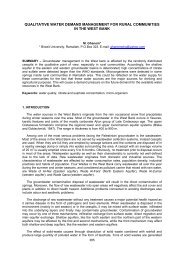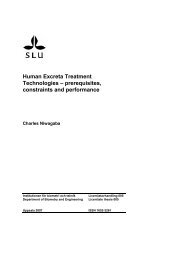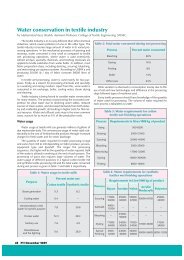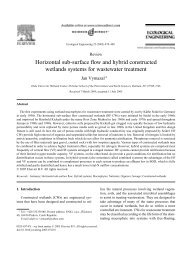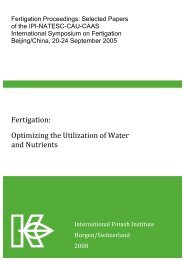The Incinerator Guidebook: A Practical Guide for Selecting ... - SSWM
The Incinerator Guidebook: A Practical Guide for Selecting ... - SSWM
The Incinerator Guidebook: A Practical Guide for Selecting ... - SSWM
Create successful ePaper yourself
Turn your PDF publications into a flip-book with our unique Google optimized e-Paper software.
Inspection by the purchaser<br />
Inspection of the incinerator should be per<strong>for</strong>med by a certified engineer upon installation. <strong>The</strong><br />
certified engineer must have extensive experience with incineration technologies and must also be<br />
able to guide the process of construction.<br />
4. Construction<br />
In addition to the standard specifications <strong>for</strong> the per<strong>for</strong>mance of the incinerator, it is essential to<br />
have a clear specification of the construction timeline.<br />
5. Training and maintenance<br />
Tender documents must also list specific requirements <strong>for</strong> training of operators and maintenance of<br />
the equipment. <strong>The</strong> company that is awarded the contract should have the capacity to per<strong>for</strong>m<br />
training and maintenance <strong>for</strong> a specific period of time after installation of the equipment.<br />
<strong>Selecting</strong> equipment<br />
When selecting a small-scale incinerator, the buyer will first need to determine whether they will<br />
purchase a locally manufactured or prefabricated incinerator. For locally built incinerators, all the<br />
raw materials are sourced and manufactured locally, transported to the site, and assembled there.<br />
For prefabricated or “imported kit” incinerators, parts are prefabricated, integrated with materials<br />
which may not be available locally (i.e., refractory bricks, refractory cement, and high-grade<br />
stainless steel), and imported from the manufacturer or a procurement agency, then assembled<br />
onsite. This decision should be made strategically by management and will have a substantial<br />
impact on capital costs, workload of the local implementing agency, and good operational<br />
per<strong>for</strong>mance. 8<br />
<strong>The</strong> choice between locally manufactured and prefabricated incinerators should be based on:<br />
� Capacity and expertise of the company to provide quality control and procure materials<br />
required to build and operate the incinerator.<br />
� Local availability of appropriate materials required to build the incinerator.<br />
� Availability of local agencies with technical capacity to correctly and accurately<br />
construct the incinerator.<br />
� <strong>The</strong> number of incinerators purchased and the ability of the manufacturer to meet supply<br />
needs.<br />
Budgeting and planning <strong>for</strong> funding<br />
Procurement or program personnel should research incinerator prices as a first step in order to<br />
develop a reasonable cost estimate. Initial price in<strong>for</strong>mation can be obtained through websites and<br />
company representatives. It is also important to ask the company to provide a detailed description<br />
of what is included in the quote.<br />
In addition to the price of the equipment, procurement personnel should estimate other associated<br />
up-front costs, such as shipping (if applicable), fees and commissions, technical consultancies,<br />
inspection and testing, out-of-pocket transaction expenses, import costs, and taxes. Operation costs<br />
will also need to be considered by program planners.<br />
8<br />
Managing health care waste disposal. Best practices in construction, use and maintenance of small-scale incinerators.<br />
October 2004. Available at: http://www.path.org/files/TS_waste_disposal_guide_part1.pdf. Accessed March 15,<br />
2010.<br />
13





